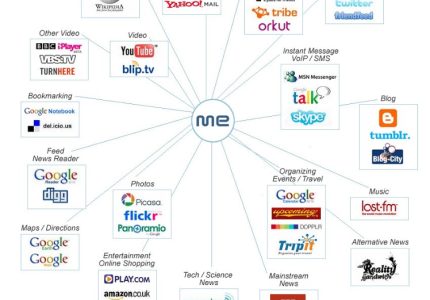Types of Personal Website Design Templates
Personal website design templates offer a versatile way to establish a unique online presence. They come in a variety of styles tailored to individual needs, ranging from minimalistic and clean layouts to bold and vibrant designs. Choosing the right template can help showcase your personality, skills, and portfolio effectively, making your website both attractive and functional.
Portfolio Templates
Personal website design templates come in various styles tailored to showcase individual talents, skills, and projects effectively. Portfolio templates are a specialized type of personal website design aimed at presenting a professional collection of work. These templates often feature clean layouts, customizable galleries, and sections dedicated to skills, experience, and contact information. They can be categorized into static templates, which provide a fixed layout ideal for simple presentations, and dynamic templates that incorporate features like blogs, testimonials, and interactive elements. Popular styles include minimalistic designs that emphasize content, creative layouts that reflect personal branding, and professional templates suited for more formal or corporate artists and freelancers. Choosing the right template depends on the personal brand, the type of work showcased, and the desired user experience.
Resume/CV Templates
Personal website design templates come in a variety of styles to suit different professional and personal branding needs. These templates often include layouts that highlight your portfolio, skills, and achievements in an attractive and organized manner. Resume or CV templates are specialized designs focused on presenting individual qualifications clearly and professionally, typically featuring sections for experience, education, skills, and contact information. Both types of templates are customizable to help create a unique online presence that reflects personal personality and career goals. They are available in formats suitable for easy editing and integration into website builders or content management systems, making it simple for users to launch a polished and effective personal website quickly.
Blog Templates
Personal website design templates come in a variety of styles tailored to showcase individual portfolios, resumes, or personal brands effectively. These templates range from minimalistic and clean layouts to more creative and dynamic designs, allowing users to choose based on their personality and professional needs.
Blog templates are a popular category within personal website designs, specifically crafted to enhance readability and engagement. They often feature customizable layouts, multiple post formats, and easy-to-navigate structures that help writers and creators share their content seamlessly. These templates can include sidebar options, featured post sections, and social media integrations to maximize audience interaction.
Landing Page Templates
Personal website design templates come in a variety of styles to suit individual needs and preferences. They range from minimalist layouts that emphasize simplicity and clarity to more elaborate designs with vibrant visuals and interactive elements. These templates are often customizable, allowing users to display their portfolios, personal blogs, or professional information effectively. Choosing the right template depends on the purpose of the website and the desired aesthetic.
Landing page templates are specialized designs focused on capturing visitors’ attention and guiding them toward a specific action, such as signing up for a newsletter or purchasing a product. They typically feature compelling headlines, clear calls-to-action, and streamlined content to maximize conversions. Many landing page templates incorporate visual hierarchy, persuasive copy, and responsive layouts to ensure they function well across devices, making them an essential tool for personal branding and marketing campaigns.
Key Features of Effective Personal Website Templates
Effective personal website templates serve as powerful tools to showcase individual skills, passions, and achievements with clarity and style. They are designed to provide a seamless user experience, enabling visitors to navigate effortlessly through important content. Key features include customizable layouts, responsive design for optimal viewing on all devices, and integrated sections for portfolios, blogs, or contact information. Such templates also emphasize visual appeal through modern aesthetics and easy-to-update structures, helping individuals create a professional online presence effortlessly.
Responsive Design
Effective personal website templates incorporate several key features to ensure a professional and user-friendly experience. A well-designed template should be visually appealing, easy to navigate, and customizable to reflect individual branding. Responsiveness is a crucial aspect, as it guarantees the website functions seamlessly across various devices and screen sizes. Additionally, these templates should prioritize fast loading times, incorporate clear calls-to-action, and include sections for showcasing portfolios, resumes, or blogs.
- Responsive Design
- Customizability
- Intuitive Navigation
- Visual Clarity and Aesthetics
- Fast Loading Speed
- Mobile Compatibility
- Clear Call-to-Action Buttons
- Section for Portfolio or Work Samples
- Integration with Social Media
- SEO-Friendly Structure
Easy Customization Options
Effective personal website templates are designed to provide a seamless and engaging user experience while allowing individuals to showcase their unique personality and skills. Key features include clean and professional layouts that highlight important content such as portfolios, resumes, and contact information without clutter. Visual appeal is enhanced through attractive color schemes, typography, and imagery that align with personal branding. Responsiveness ensures the website looks great on all devices, from desktops to smartphones, providing accessibility to a broader audience. Additionally, well-structured navigation enables visitors to easily find information, making the site more user-friendly.
Easy customization options are essential for personal websites to reflect individual style and preferences without requiring advanced technical skills. Templates offering drag-and-drop editors or simple editing interfaces allow for quick modifications of layouts, images, and text. Customizable color palettes, fonts, and content sections enable users to personalize the design to match their branding or aesthetic tastes. Pre-built sections or blocks for portfolios, blogs, testimonials, and contact forms help streamline the setup process. Overall, templates that combine flexibility with simplicity empower users to create a professional and unique online presence effortlessly.
Clear Navigation Structure
Effective personal website templates should prioritize a clear navigation structure to enhance user experience and ensure visitors can easily find the information they seek. A well-organized menu system typically includes prominent sections such as About, Portfolio, Services, Blog, and Contact, allowing for intuitive exploration of the site’s content.
Design consistency across pages, including uniform fonts, colors, and layout styles, helps users recognize navigation cues and navigate seamlessly. Incorporating a sticky or fixed navigation menu ensures accessibility as visitors scroll through content, maintaining ease of movement throughout the site.
Moreover, clear labeling of navigation links using straightforward and descriptive text minimizes confusion and guides visitors effectively. Incorporating visual cues such as icons or hover effects can also aid in making the navigation more intuitive. Overall, a thoughtful, organized navigation structure is crucial to creating a personal website that is both user-friendly and visually appealing.
Integrated Contact Forms
Effective personal website templates incorporate several key features that enhance usability and visual appeal. Clear and responsive layouts ensure the site looks great on all devices, providing a seamless user experience. Customization options allow individuals to personalize the template to match their unique brand or style, making the website truly their own. Elegant typography and balanced color schemes improve readability and aesthetic harmony. Additionally, integrated contact forms are essential for facilitating easy communication, enabling visitors to reach out without navigating away from the site. These forms should be simple to use and secure, encouraging interaction and building trust with visitors.
Popular Platforms for Personal Website Templates
Choosing the right platform for personal website templates is essential for creating a professional and visually appealing online presence. With a variety of popular options available, individuals can easily find templates that suit their style, skills, and goals. These platforms offer user-friendly interfaces, customizable designs, and a wide selection of themes to help users showcase their work, passion, or personal brand effectively.
WordPress Themes
When choosing a personal website design template, there are several popular platforms that offer a wide variety of themes to suit individual needs. WordPress remains one of the most favored options due to its extensive library of themes, user-friendly interface, and customizable features. Platforms like ThemeForest and Elegant Themes provide professionally designed templates that cater to different niches and styles, making it easy to create a unique online presence. Wix and Squarespace are also popular choices, offering visual builders and elegant templates tailored for personal portfolios, blogs, or resumes. These platforms often include drag-and-drop features that simplify the customization process, enabling users to craft personalized websites without extensive coding knowledge. Overall, selecting the right template from these trusted platforms can help establish a professional and visually appealing personal website efficiently.
Wix Templates
Popular platforms for personal website templates offer a wide range of options to help individuals create professional and attractive online presence. Wix, in particular, is renowned for its user-friendly interface and diverse collection of customizable templates. Wix templates are designed to cater to various personal branding needs, from portfolios and resumes to blogs and personal projects. They feature modern designs, responsive layouts, and easy-to-edit features, making it simple for users to personalize their websites without coding knowledge. Additionally, Wix provides built-in tools for SEO, social media integration, and e-commerce, enhancing the functionality of personal websites. These platforms enable users to launch visually appealing, functional websites quickly, making them popular choices for personal website design templates.
Squarespace Designs
Choosing the right platform for personal website templates is essential for creating a professional and visually appealing online presence. Squarespace is widely recognized for its sleek and customizable designs, making it a popular choice for individuals seeking stylish templates without extensive coding skills.
- Squarespace Templates: Known for elegant, modern designs that are easy to customize, perfect for portfolios, blogs, and personal branding.
- Wix: Offers a vast collection of personal website templates with drag-and-drop functionality, suitable for creative professionals and entrepreneurs.
- WordPress: Provides thousands of themes, many free and premium, allowing for extensive customization and flexibility for personal websites.
- Weebly: Features simple, clean templates that are user-friendly, ideal for beginners looking to create a straightforward personal site.
- TemplateMonster: A marketplace with a wide range of professional templates compatible with various platforms, including personal blogging and portfolio sites.
Each platform offers unique advantages depending on your design preferences, technical skills, and the functionality you need for your personal website.
HTML/CSS Templates
Popular platforms for personal website templates and HTML/CSS templates offer a wide range of design options to help individuals create professional and visually appealing online portfolios or personal sites. These platforms provide pre-designed templates that are easily customizable to suit personal branding and style preferences. Examples include ThemeForest, TemplateMonster, and Creative Market, which host a variety of modern and responsive templates suitable for different niches. Additionally, platforms like Bootstrap Studio offer frameworks that include numerous free and premium templates optimized for mobile devices and search engines. Many website builders such as Wix, Squarespace, and Weebly also provide a collection of personal website templates that are user-friendly, requiring minimal coding knowledge. For developers comfortable with coding, open-source repositories like GitHub feature a plethora of free HTML/CSS templates designed by a community of designers and developers, ensuring both quality and variety. Selecting the right template depends on the desired aesthetic, functionality, and level of customization needed for personal branding. Overall, these platforms make it easier for individuals to build impressive personal websites without extensive technical skills.
Design Elements in Personal Website Templates
Design elements play a crucial role in creating visually appealing and functional personal website templates. They encompass various aspects such as layout, color schemes, typography, imagery, and interactive features that collectively shape the user experience. Thoughtfully integrated design elements help personal websites stand out, convey individual personality, and communicate content effectively to visitors.
Color Schemes and Typography
Design elements in personal website templates play a crucial role in showcasing individual personality and professionalism. Carefully chosen layouts, navigation styles, and visual accents help create an engaging user experience. Color schemes are vital in setting the mood and reinforcing brand identity, whether through vibrant, energetic tones or subtle, minimalist palettes. Typography also significantly impacts readability and aesthetic appeal; selecting appropriate fonts and sizes ensures content is accessible and visually harmonious. Together, these design components contribute to a cohesive and memorable personal website that effectively communicates its owner’s unique identity and message.
Imagery and Iconography
In personal website templates, imagery and iconography play a crucial role in conveying personality and enhancing visual appeal. Carefully selected images, such as professional photos, background visuals, and illustrative graphics, help create an engaging experience and establish credibility. Iconography, on the other hand, provides intuitive navigation aids and visual cues that improve usability. Clear, cohesive icons aligned with the overall design style ensure that visitors can easily understand and interact with different sections of the website. Balancing high-quality images with well-designed icons fosters a memorable and professional online presence that accurately reflects individual branding.
Layout and Grid Systems
Layout and grid systems are fundamental design elements in personal website templates, shaping how content is organized and perceived by visitors. These systems provide structure, ensure visual harmony, and facilitate responsive design for various devices. A well-implemented grid allows for consistent spacing, alignment, and proportionality, making the website easier to navigate and visually appealing. Choosing the right layout—whether single column, multi-column, or asymmetrical—depends on the website’s purpose and content type, but the grid system remains the backbone guiding these choices.
- Responsive grids automatically adjust to different screen sizes, ensuring usability across desktops, tablets, and smartphones.
- Flexible layout options enable personal websites to showcase images, text, and multimedia effectively without clutter.
- Grid systems help maintain visual balance, guiding the viewer’s eye and emphasizing key content areas.
- Combining grid structures with whitespace enhances readability and prevents the design from feeling overcrowded.
- Many modern templates employ CSS frameworks like Bootstrap or Flexbox, simplifying the implementation of complex grid layouts.
Call-to-Action Buttons
Design elements in personal website templates play a crucial role in creating an engaging and professional online presence. Thoughtful use of layout, typography, color schemes, and imagery helps convey individuality and brand identity effectively. Clear and consistent design contributes to a seamless user experience, encouraging visitors to explore more about the person behind the site.
Call-to-action buttons are essential components of personal website templates that guide visitors toward desired actions, such as contacting, viewing portfolios, or downloading resumes. Effective CTA buttons stand out through strategic placement, contrasting colors, and compelling text. They should be easy to identify and encourage interaction, leading to increased engagement and achieving the website’s goals.
Customization Tips for Personal Website Templates
Creating a unique and professional personal website starts with effectively customizing your chosen design template. Customization tips can help you tailor the layout, colors, fonts, and content to reflect your personality and brand identity. By understanding how to make small adjustments, you can transform a basic template into a compelling online presence that truly represents you.
Branding Consistency
Maintaining branding consistency is essential when customizing personal website templates to create a cohesive and professional online presence. Start by selecting a color palette that reflects your personal brand or niche, and ensure it remains uniform across all sections of your site. Use consistent typography by choosing one or two fonts that complement each other, applying them uniformly to headings, subheadings, and body text. Incorporate your logo or personal mark consistently in the header or footer to reinforce brand recognition. Customize templates while respecting the original design elements to avoid clutter and maintain visual harmony. Additionally, align your message and tone throughout the content to strengthen your personal branding. Regularly update and refine your website’s visuals and content to stay true to your brand identity and ensure visitors receive a unified experience.
Adding Personal Touches
Adding personal touches to your personal website design templates can truly make your site stand out and reflect your unique personality. Start by customizing the color scheme to match your personality or brand identity, ensuring it resonates with your visitors. Incorporate your own images, such as a professional photo or portfolio shots, to give a more authentic feel. Personalize the typography by choosing fonts that represent your style, whether modern, playful, or elegant, to enhance readability and visual appeal. Including custom icons or graphics can further enhance your site’s uniqueness. Additionally, writing a bio or personal statement in your own voice helps visitors connect with you on a deeper level. Lastly, feel free to add sections that showcase your hobbies, achievements, or testimonials, making your website a true reflection of who you are.
optimizing User Experience
Optimizing user experience in personal website design templates begins with ensuring intuitive navigation. Use clear menus and logically organized sections so visitors can easily find the information they seek. Incorporate consistent visual styles, such as colors, fonts, and spacing, to create a cohesive look that enhances readability and reduces confusion. Customization should also focus on responsive design, enabling the site to adapt seamlessly across devices and screen sizes. Including personalized content elements, such as your bio, portfolio, or blog, helps establish a genuine connection with visitors. Additionally, optimizing load times by compressing images and minimizing unnecessary scripts ensures a smooth browsing experience. Finally, providing interactive features like contact forms or social media links encourages engagement and makes it easy for visitors to connect with you.
SEO Best Practices
When customizing personal website templates, it is essential to focus on creating a unique and professional appearance that reflects your personality and brand. Choose color schemes, fonts, and layout structures that resonate with your identity while maintaining readability and visual harmony. Incorporate personal touches such as custom logos, images, and content to make the site stand out. Additionally, ensure that the customization maintains responsiveness across different devices to provide a seamless user experience.
Implementing SEO best practices is crucial for increasing the visibility of your personal website. Start by using descriptive and relevant titles and meta descriptions for each page. Incorporate targeted keywords naturally within your content, headings, and image alt texts to improve search engine rankings. Optimize your website’s loading speed by compressing images and minimizing code, which enhances user experience and SEO performance. Moreover, ensure your site has a clear navigation structure and includes internal links to guide visitors and search engines effectively. Regularly updating your content and maintaining a clean, crawlable site architecture further boost your SEO efforts and help your personal website attract more visitors organically.
Trends in Personal Website Template Design
In recent years, personal website templates have evolved significantly, reflecting changing design trends and technological advancements. Modern templates focus on clean aesthetics, responsiveness, and user-friendly interfaces to showcase individual portfolios, blogs, and professional profiles effectively. Staying current with these design trends helps individuals create engaging and visually appealing websites that stand out in a competitive digital landscape.
Minimalism and Simplicity
Recent trends in personal website template design emphasize minimalism and simplicity to create clean, focused, and user-friendly experiences. These approaches help visitors easily navigate content without distraction, highlighting the individual’s personality and work effectively. As digital aesthetics evolve, streamlined layouts and minimal color schemes are becoming standard for personal sites, reflecting modern tastes and functional needs.
- Use of ample white space to improve readability and create a clean appearance.
- Simplified navigation menus that are intuitive and unobtrusive.
- Limited color palettes focusing on neutral tones or soft accent colors.
- Large, bold typography to emphasize key messages and enhance visual impact.
- Minimalistic design elements that avoid clutter and unnecessary decoration.
- Responsive layouts that adapt seamlessly to different devices and screen sizes.
- Focus on high-quality images and visuals to showcase personal projects or portfolios.
- Incorporation of subtle animations or transitions to add a touch of modern sophistication without overpowering the content.
Dark Mode Integration
Personal website templates are continuously evolving to meet modern aesthetic and functional demands. One prominent trend is the integration of dark mode, which offers a visually comfortable experience and reduces eye strain for visitors. Dark mode designs emphasize sleek, minimalist aesthetics while enhancing content readability and emphasizing visual elements. Templates now often include easy toggles or automatic switching features to allow users to custom-tailor their browsing experience. Additionally, designers are focusing on responsive layouts that adapt seamlessly across devices, along with personalized sections such as portfolios, blogs, and contact forms. The combination of trendy visuals, user-centric features, and dark mode support makes these templates more engaging and functional for personal branding purposes.
Interactive Elements and Animations
Current trends in personal website template design emphasize a blend of minimalism and bold visual elements to create engaging user experiences. Clean layouts with ample white space make content easily readable while allowing key features to stand out. Interactive elements such as hover effects, animated icons, and smooth scrolling enhance user engagement and convey a modern aesthetic. Animations are increasingly sophisticated, incorporating subtle transitions, micro-interactions, and dynamic content loading to add a layer of interactivity without overwhelming visitors. Additionally, incorporating responsive design ensures that templates are adaptable across a variety of devices, maintaining visual appeal and functionality. Overall, the focus is on creating personalized, visually appealing, and user-friendly websites that showcase individuality and creativity through dynamic design features.
Vertical and Asymmetrical Layouts
Recent trends in personal website template design emphasize innovative layouts that enhance user engagement and visual appeal. Vertical and asymmetrical layouts are particularly popular, offering unique ways to organize content and guide visitors through the site effectively.
- Vertical layouts prioritize scrolling and create a seamless narrative flow, making them ideal for storytelling or showcasing portfolios. They often incorporate full-height sections that encourage exploration and movement through content.
- Asymmetrical designs break away from traditional grid structures, providing a dynamic and modern aesthetic. This approach allows designers to emphasize key elements and create visual interest through imbalance and creative placement.
- Combining vertical and asymmetrical layouts enables personalized and bold websites that stand out. Such templates often feature bold typography, innovative navigation, and large imagery to communicate personality and creativity.
- Responsive adaptation of these layouts ensures they look appealing across devices, maintaining user experience and accessibility regardless of screen size.
- Designers are also integrating subtle animations and interactive features within vertical and asymmetrical templates to increase engagement and offer a more immersive browsing experience.





